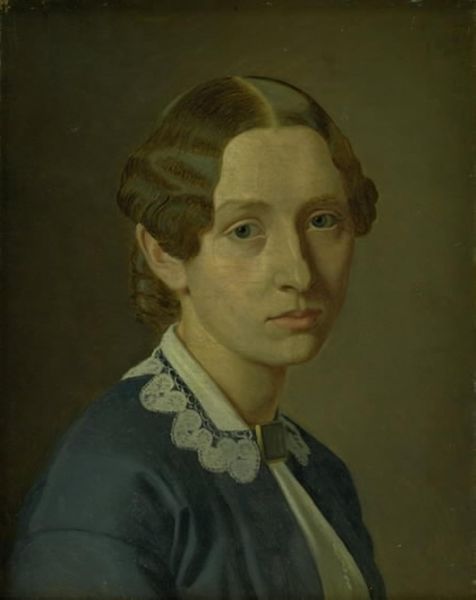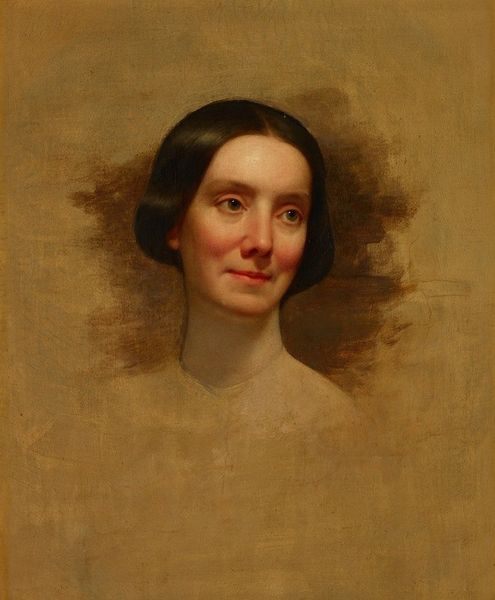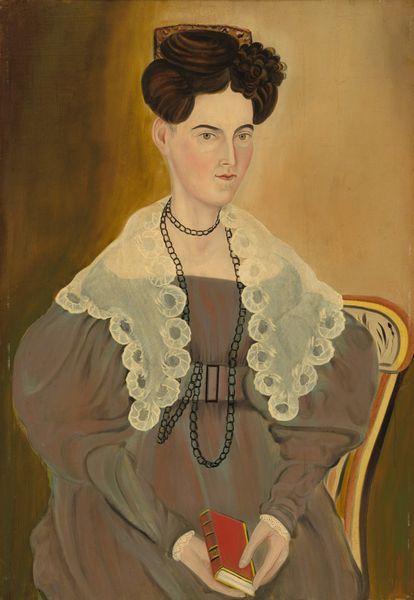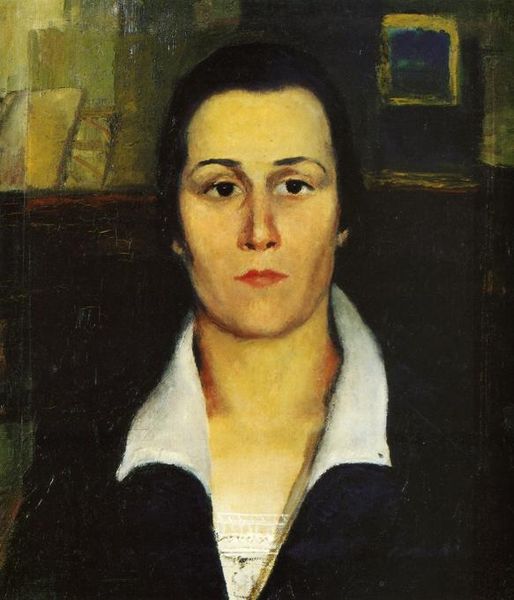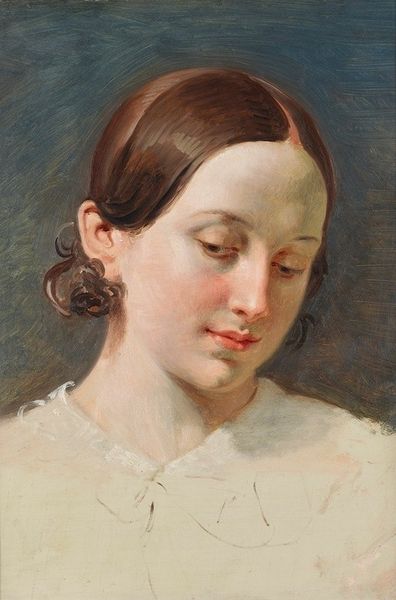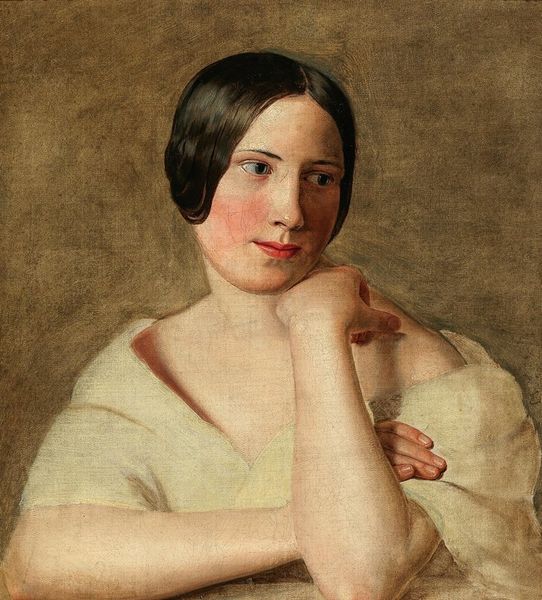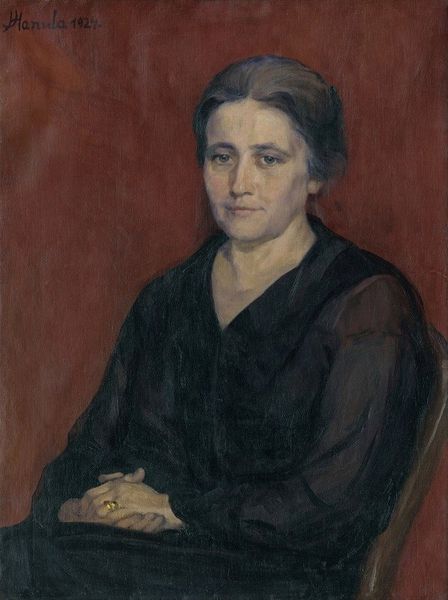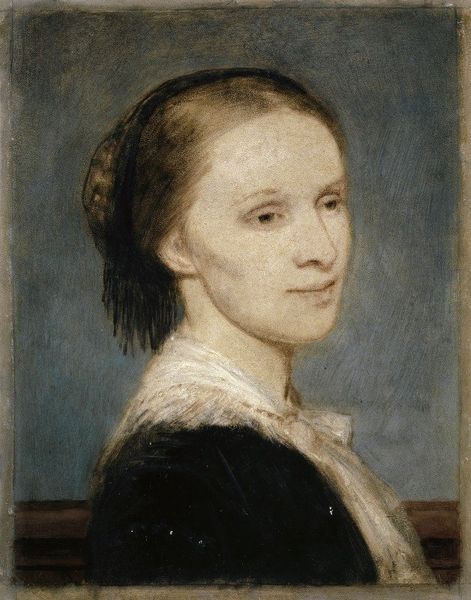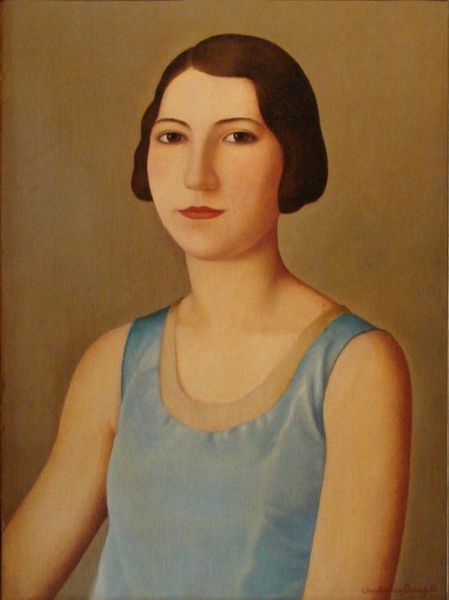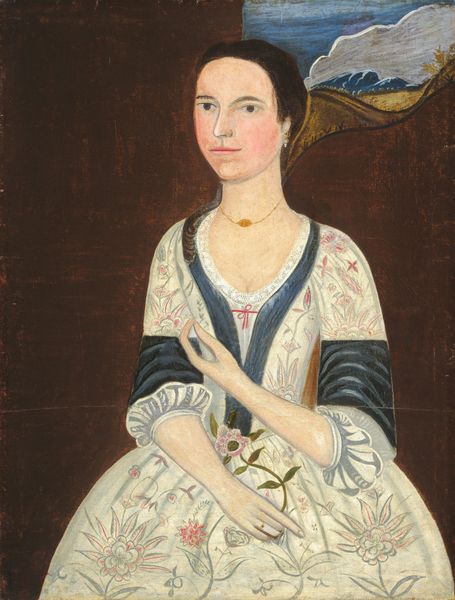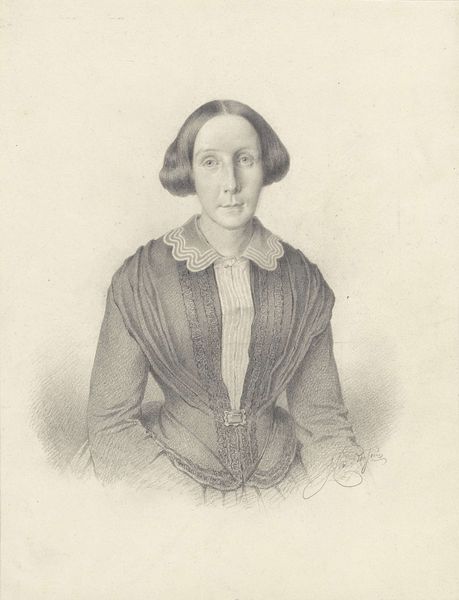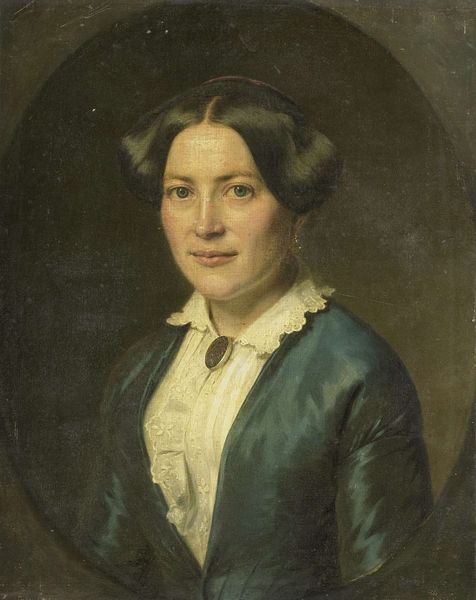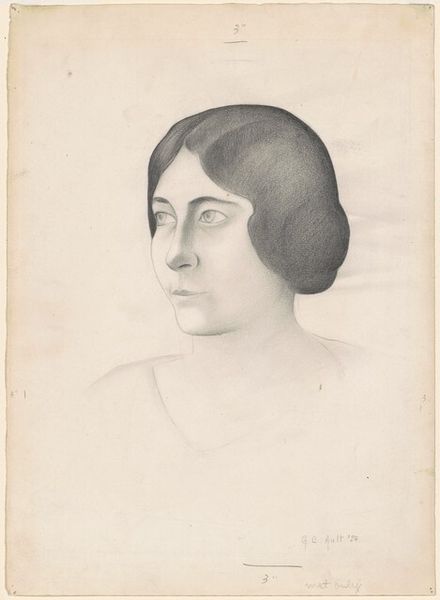
painting, oil-paint
#
portrait
#
figurative
#
painting
#
oil-paint
#
portrait reference
#
portrait head and shoulder
#
romanticism
#
animal portrait
#
animal drawing portrait
#
portrait drawing
#
facial portrait
#
portrait art
#
fine art portrait
#
realism
#
celebrity portrait
#
digital portrait
Copyright: Public Domain: Artvee
Curator: Let’s turn our attention to “Ann-Marie Fabritius,” painted in 1849 by Ferdinand von Wright. Editor: The immediate impact is…understated. The palette feels limited; blues, browns, a touch of white. I’m drawn to how flat and almost manufactured the light seems; the artist perhaps aiming for an accessible idealism? Curator: The subject's pale blue dress and white collar evoke notions of purity and virtue, a popular visual language of the time, perhaps commenting on idealized womanhood in 19th-century Finnish society. Notice her demure gaze and slightly averted posture. What might these details communicate? Editor: Certainly a construction, then. I am curious about the type of pigment von Wright employed to achieve the smoothness of skin; and to what extent this affected color retention over the decades. How accessible were these materials to the artist at that time, and how would that limit their palette? Curator: Considering the social context of Romanticism, such a delicate rendering, particularly in the soft contours of her face, might aim to capture the inner spirit of the subject, aligning her with idealized beauty, also to be read as her inherent good character. Editor: While beauty and "good character" can definitely be considered subjective constructs that fluctuate over time, I think it would be pertinent to learn more about Von Wright's patronage network during the period to shed light on what societal forces and resources are at play during his labor. Curator: Perhaps that demure gaze indicates both social constraint, and the power residing in silence—her stillness potentially signifies deep introspection. Editor: An introspection likely performed beneath the weighty blanket of cultural expectations enforced through systems that rely on controlled resources for both labor and beauty standards. Food for thought! Curator: Indeed. It is through observing these pieces that we truly begin to appreciate how history continues to speak to the present. Editor: And hopefully continue questioning both our materials and meanings in the present as well.
Comments
No comments
Be the first to comment and join the conversation on the ultimate creative platform.
